Virtual reality in real estate might sound inherently contradictory at first glance. But the phrase highlights an essential point about the new digital landscape. Virtual reality has become an actual world perfectly intertwined with the standard physical world. You’re about to see this domain’s past, present, and future along with ways to get started.
Quick Menu:
- The Metaverse Highlights Why Virtual Reality in Real Estate Is So Important
- What Is Virtual Reality?
- What Is the Difference Between Virtual Reality, Mixed Reality, Augmented Reality, and Extended Reality?
- What Is the Real Estate Industry?
- 6 Ways to Benefit from Virtual Reality in Real Estate
- Benefits of Virtual Reality in Real Estate
- 4 Real-World Examples of Virtual Reality in Real Estate
- Window Shopping With Virtual Reality in Real Estate
The Metaverse Highlights Why Virtual Reality in Real Estate Is So Important
You might wonder how virtual reality in real estate is even possible. But it makes sense when you look at the metaverse. The metaverse is an entire virtual world that exists as a shared, social, and borderless environment. It’s always operating and never switches off. But it’s not entirely virtual. The metaverse is a collaboration or merger between the digital and physical worlds through various technologies.
Metaverse news often reads like standard world news because they share a persistent and social nature. And that includes the ability for creative minds to build notable works, or even structures, within them. Metaverse companies provide tools like VR headsets, AR glasses, and more to access it. And some standard devices like phones and PCs can also access elements. You can discover more about the larger metaverse in the article “Metaverse Guide; Understanding The Basics Will Open Up a New World”.
What Is Virtual Reality?
Virtual reality describes using the previously mentioned virtual reality headset to immerse yourself in a computer-generated landscape fully. The VR headset’s cutting-edge technology can generate objects and entire scenes that feel incredibly immersive. These environments can be so realistic that professionals even use the tech for training and education. This includes everything from heart surgery to athletics and, of course, virtual reality in real estate.
The current level of VR leveraged by metaverse brands is incredibly futuristic. But it’s also the culmination of ideas people have been working on since the 1950s. Moviegoers of that era could be wowed by Sensorama machines that would include odors and vibrations during 3D movies. Over time new technologies will make true virtual reality possible for everyone. You can take a look at the essential elements of VR in the article “Virtual Reality; Discover VR, Its Components, Technology, and Players”.
What Is the Difference Between Virtual Reality, Mixed Reality, Augmented Reality, and Extended Reality?
VR is, of course, the main force behind virtual reality in real estate. But it’s also just one example of extended reality (XR) tech. XR also includes augmented reality (AR) and mixed reality (MR). VR totally envelops you in a digital world, but AR enhances the physical world with digital elements. MR bridges AR and VR by merging the worlds through holograms and other immersive projections. The underlying metaverse meaning of AR is centered around adding to real-world experiences rather than creating synthetic experiences.
You can learn more about this approach to extended reality by reading the article “Augmented Reality; Learn About AR Tech, Use Cases, Devices, and More!” You can delve into the new realm of mixed reality in the article “Mixed Reality; Everything to Know About MR Technologies” you’ll see how these technologies work together in the article “Extended Reality; How is XR Changing the Digital World?”
What Is the Real Estate Industry?
Of course, understanding virtual reality in real estate requires a set definition of the real estate industry. You can essentially think of it as a banner term encompassing many property elements. This includes leasing, development, and management of all sorts of properties. The real estate industry is also defined by stability, even during economic hardship. After all, everyone needs a place to work and live. It also creates property through rezoning, construction, renovation, and even land deals. Of course, selling those creations is also part of the industry and is handled by real estate agents.
6 Ways to Benefit from Virtual Reality in Real Estate
Now that you have a solid grasp of various XR technologies and the real estate industry as a whole, you’re probably wondering how they fit together. There are many different ways to use virtual reality in real estate. But the following examples highlight some of the most exciting trends.
Property Showing
Property showcases have quickly become one of the most popular uses for virtual reality in real estate. It’s easy to see the appeal of this technology from a consumer perspective. You can essentially take a look at a property right as it catches your attention. This leads to a huge increase in interest. People who see a real estate listing with a 3D tour are 95% more likely to contact an agent. And a property with 3D tours spends about 1/3rd less time on the market.
VR tours also translate into a higher level of efficiency in negotiations. A property that offers 3D tours can sell for about 9% more than standard listings. In short, all of this means that VR real estate property showcases make properties sell faster and with a significantly higher profit margin. And that quicker turnover rate also gives you increased overall efficiency with scheduling.
Virtual Home Staging
One of the recurring themes of virtual reality in real estate is how every party benefits from it. And this is especially clear when looking at home staging. Staging a home is usually incredibly expensive. However, it’s also quite an effective way to sell a home. When clients see a fully furnished, staged home, they get to see a real example of what can be done with the property.
Walking into a house with cozy furniture and a feeling of hominess is inherently more appealing than walking into an empty white room. But putting that together takes time, effort, and a serious monetary investment. However, doing it in VR makes the staging process a snap. The process can even be tailored to match any individual’s tastes. Multiple design styles can be ready in the blink of an eye to appealing to different people and different preferences.
House Visualizations
It’s often problematic for people to really visualize what a property will look like when it’s still under construction or just in the planning phase. This is especially true on the client side of things, where someone typically isn’t involved with a lot of design projects. A realtor will often have a good feel for it, but that isn’t easy to convey verbally to clients. However, it’s straightforward to do when leveraging the power of virtual reality in real estate.
VR is a perfect match for architecture. Different forms of virtual architectural visualizations can give people a realistic look at a project’s interior and exterior at every stage. You can essentially show people a property that hasn’t even been built yet. This translates into full v-commerce – sales are made by virtuality. As e-commerce changed the retail marketplace, so will v-commerce revolutionize the real estate marketplace.
Virtual House Tours
Communication is one of the most important and difficult elements of real estate. The modern market allows for business to be done all over the world. But real estate agents and landlords alike can only be in one place at a time. And transit to multiple properties can be severely time restrictive. But that’s all changing with the advent of virtual reality in real estate. Property owners can now provide full location tours just by donning a VR headset.
This concept has proven particularly useful for short-term vacation rentals. The vacation rental industry typically has a high turnover rate. This increases the need for on-site work, sales, and support. For example, you might need to explain a property’s utility services as new people come and go. But with VR, that process can be easily done without either party needing to make special preparations.
V-Commerce
Another exciting element of virtual reality in real estate is how it’s changed the nature of the industry. Several time-consuming elements typically constrained real estate. The earlier example of staging highlights how much work can go into presenting a property to just one interested party. And even then, there’s a lot of guesswork that needs to go into the procedure. You have to anticipate what people might like since it’s such an involved process. But VR real estate can make all of that happen in an instant.
You can quickly swap out various elements during a virtual tour to help potential customers see the sheer potential available to them. You can change the lighting in a building, add decorations, furniture, etc. And you can even adapt the presentation to different learning styles. Working with a visual learner? No problem, you can bring up pop-ups with statistics.
Virtual Real Estate
You’ve seen how VR can use digital information to convey elements of physical areas. But virtual reality in real estate also exists in the digital world of the metaverse. This is thanks in part to the nature of NFT files. The deeper NFT meaning comes down to uniqueness. An NFT is unique, which allows for true ownership of digital land or buildings. This has led to a booming real estate market within the metaverse.
Large corporations, fashion brands, and anyone whose business intersects with the public often have a presence in the metaverse. And this commonly translates to digital land ownership. Companies can use these locations as a combination of shop and advertising opportunities. It’s easy to see the attraction, given that the metaverse is expected to expand to a $824.53 billion market by 2030.
Benefits of Virtual Reality in Real Estate
Many of the benefits of virtual reality in real estate come back to a few main points. One of the most important is the element of time. Showing properties, especially remote properties, can be a time-consuming process. But it’s an essential part of the industry. VR can instantly give prospective clients a look into properties anywhere on earth. And this is also an inherently immersive experience for both parties.
Additionally, time spent with open houses, travel, etc can now be spent retaining and building customer loyalty. VR also enhances interaction with clients. Improved technologies translate into improved communication. This makes it easier for clients to ask questions. Agents can even provide answers by showing what a property might look like with some extra work. It can essentially transform fantasy into reality.
All of the previous points also translate into reduced costs. VR tours mean travel expenses are cut down. Marketing costs go down when you can easily provide direct access to resources. And all of the time saved with VR can be time spent being productive in other profitable areas of the industry. While VR requires an initial investment, the costs are offset by the savings it provides.
4 Real-World Examples of Virtual Reality in Real Estate
There are countless examples of companies putting these ideas into practice. But some companies using virtual reality in real estate deserve special attention. The following are among fascinating companies within an already astounding technological movement.
Sotheby’s
Sotheby’s has lept into the virtual reality in real estate business through 3D and VR tours on its sothebysrealty.com site. When people load the portal up, they can choose a 3D view option to explore various homes. And the service is even available as a full virtual reality tour on compatible mobile devices. The data for the service comes through specialized cameras placed throughout the homes. Sotheby’s uses these new technologies to add even more details to its already rich descriptions, high-res photography, and high-def videos. The end result is property detail pages that really capture a home’s true potential.
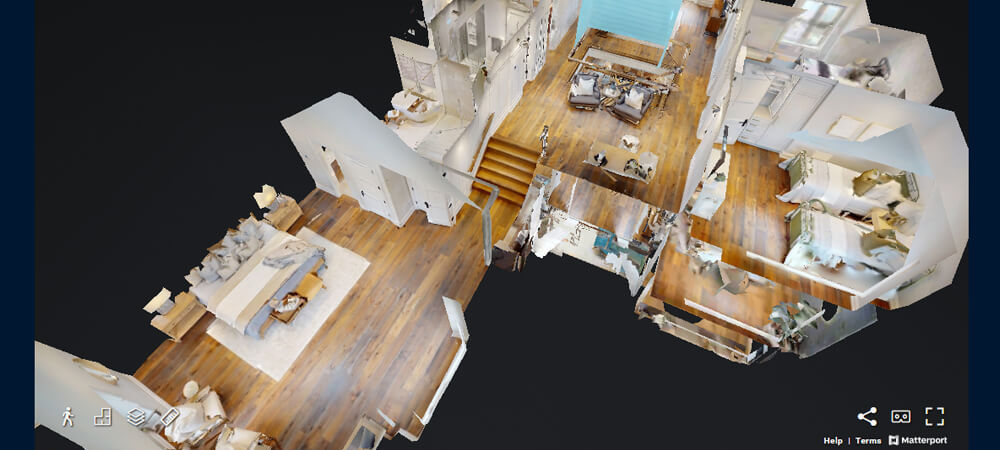
Image attribution: Sotheby’s
Zillow
Zillow has taken an interesting approach to virtual reality in real estate that empowers real estate agents with easy-to-use tools. The Zillow 3D Home app stips much of the complexity out of VR modeling. You don’t need any specialized equipment to begin mapping out a home for VR presentations. Just grab an iPhone 7 or newer and start recording the layout of various rooms using the Zillow 3D Home app. You can also take the visuals to the next level with any compatible 360-degree camera. Once you’re happy with the results, you can upload the tour through iPhone or Android.
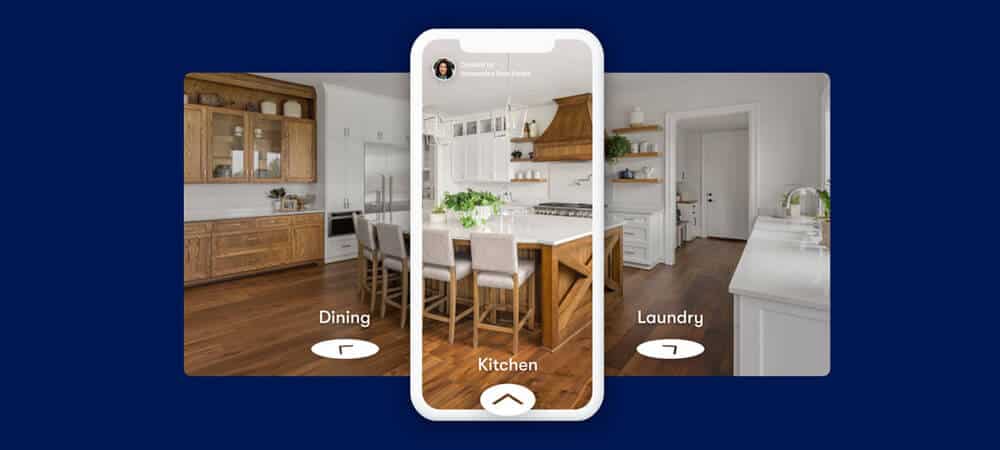
Image attribution: Zillow
Atlas Bay VR
Atlas Bay VR is leveraging virtual reality in real estate to provide true immersion for customers. A lot goes into a home. People want to really create a true connection by choosing colors, materials, and even floor designs. But that’s not always easy to imagine when dealing with apartments or condos which still need to finish construction. Atlas Bay VR uses this new technology to let prospective residents really feel the possibilities without ever needing to step onto the property physically. This process can help build emotional connections from the start and overcome any possible concerns or objections.
Video: High-End Virtual Reality for Real Estate
NS Ventures
NS Ventures provides a take on virtual reality in real estate that’s centered around B2B marketing. The company can shape strategies through the use of cost-effective branding, business solutions, and of course, technology. NS Ventures has several high-tech solutions for the real estate sector. These include the Construction Update Virtual Tour, Locality VR, and Property Listings VR. NS Ventures has leveraged these tools to work with a diverse client portfolio. This includes everything from industrial buildings and construction properties to private and commercial clients. The company’s expertise keeps property content engaging and immersive.
Video: Real Estate Virtual Reality Tour Video By NS Ventures
Window Shopping With Virtual Reality in Real Estate
Virtual reality in real estate often supports a variety of devices. But the best way to experience VR is with a VR headset. One of the great things about the current state of the industry is that you have many options to fit your personal preferences best. Headsets like the Pimax Vision 8K X give a top-tier performance for those who don’t mind a higher cost. While lower-cost options like the Oculus Quest still produce great experiences. You can find your perfect VR headset in the article “VR Headsets; Your Complete Guide to the Top Virtual Reality Gear”.
Virtual reality in real estate marks an exciting convergence of technologies. It’s up there with metaverse crypto in highlighting how technology changes the world. But there’s one missing piece of the puzzle. The world of VR is waiting for you!
Did You Like This Article About Virtual Reality in Real Estate?
You might also be interested in the following articles:
- AR Contact Lenses; Learn About Advanced AR Technology
- Virtual Reality in Construction; Clear Examples of VR in Construction
- Metaverse Workplace; How Metaverse Is Transforming the Workplace



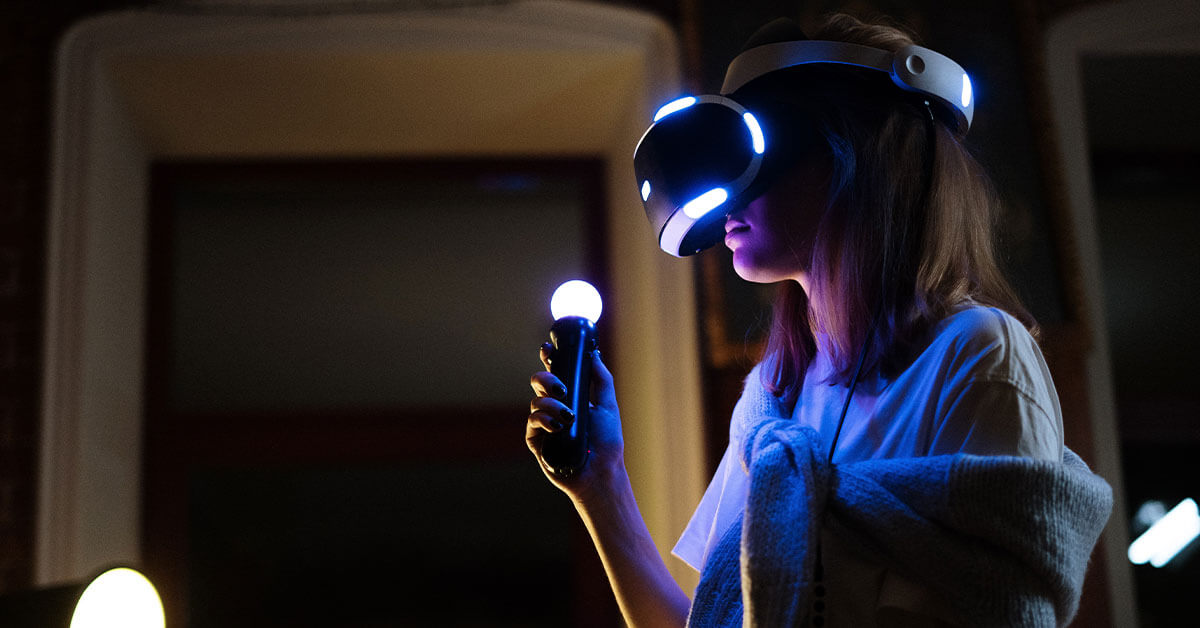

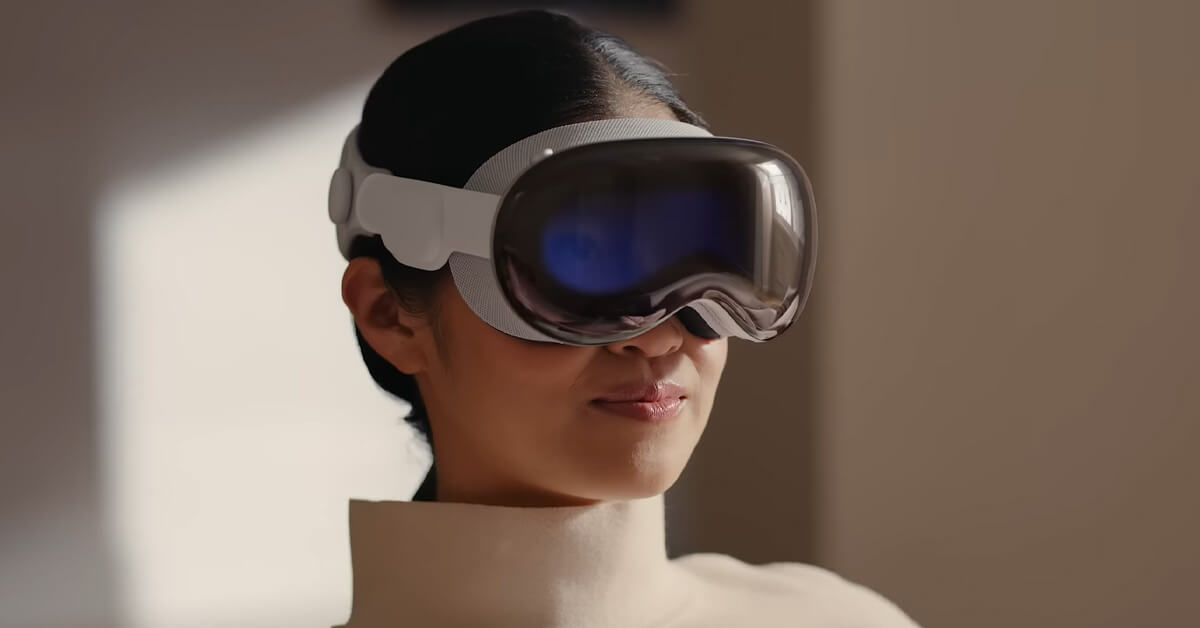
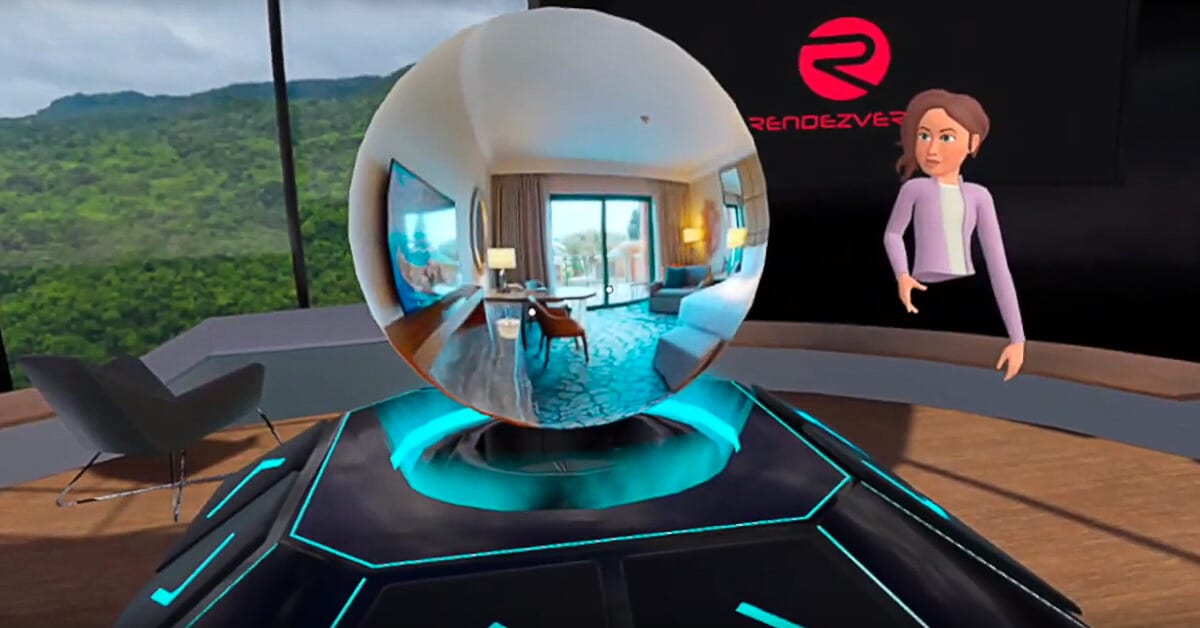
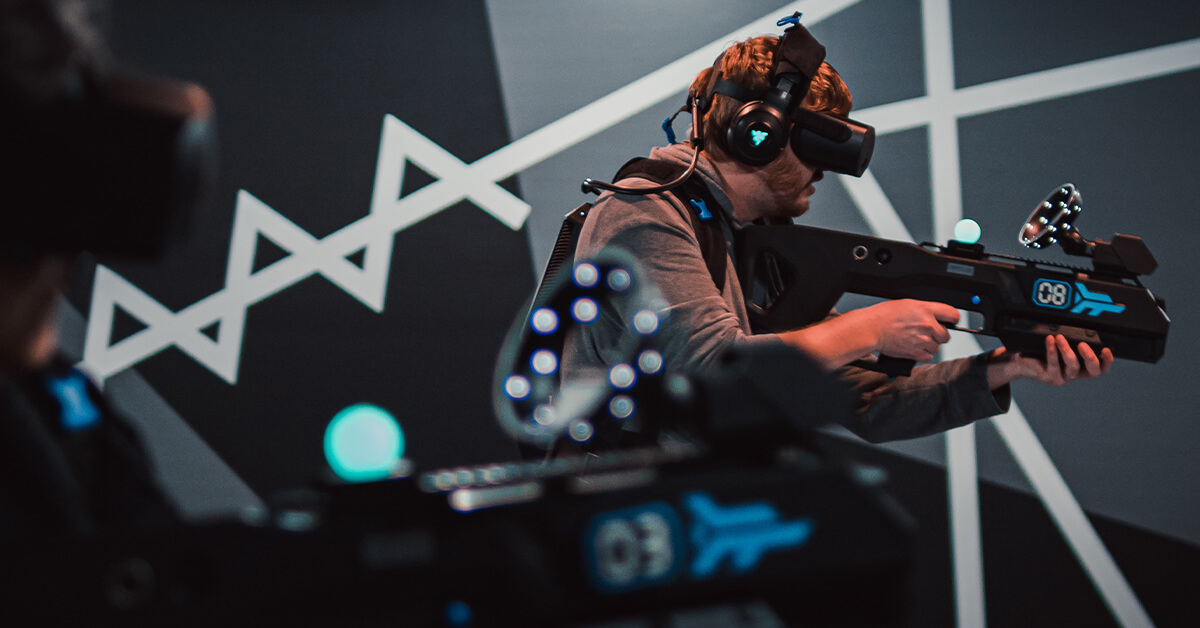

Incredible how technology can help us. I am currently looking for houses for sale in Merida, but this type of tech seems very interesting and helpful.